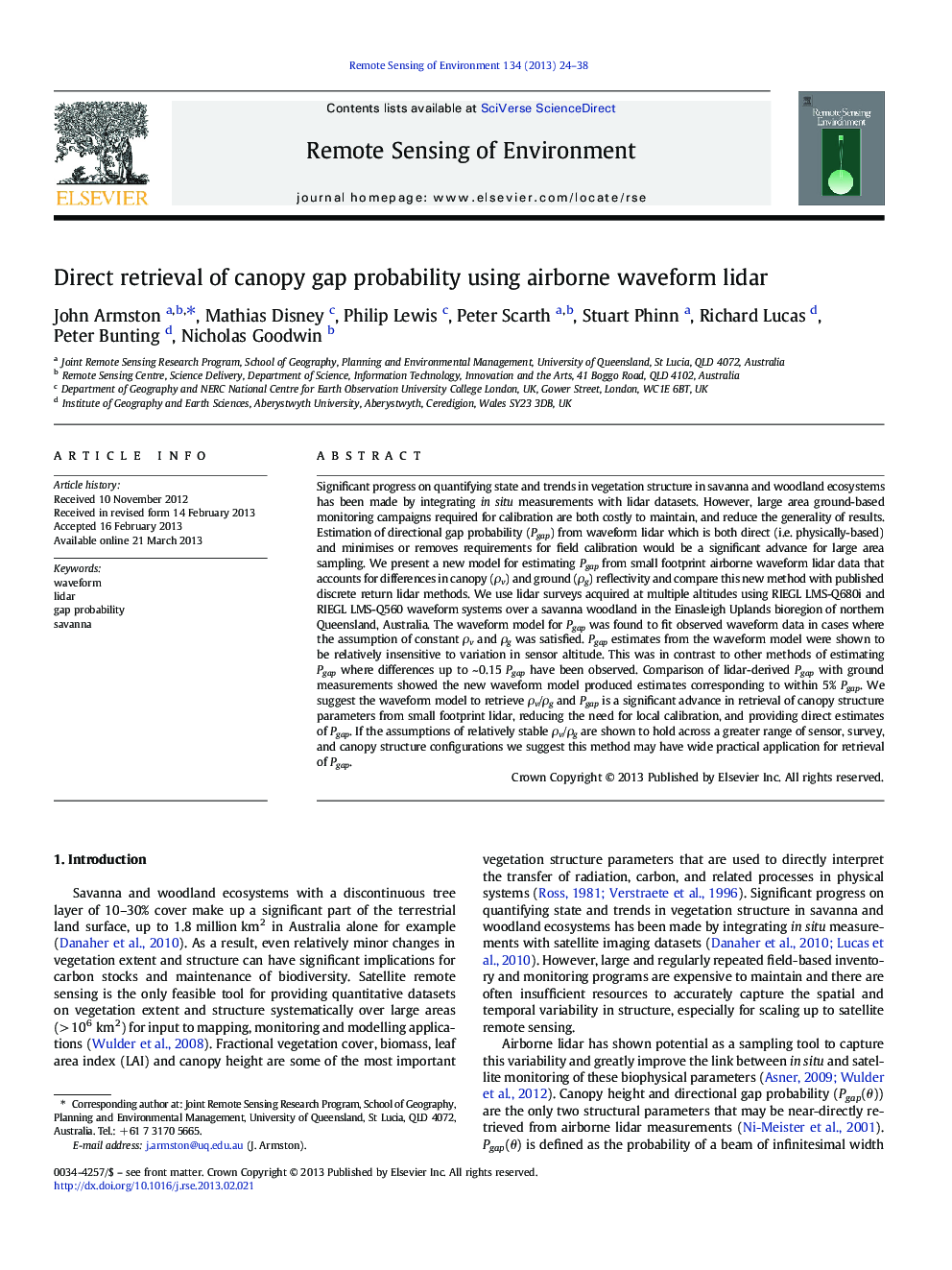| کد مقاله | کد نشریه | سال انتشار | مقاله انگلیسی | نسخه تمام متن |
|---|---|---|---|---|
| 4459159 | 1621266 | 2013 | 15 صفحه PDF | دانلود رایگان |

• We present a new model for canopy gap probability from waveform lidar data.
• Waveform estimates of gap probability were insensitive to sensor altitude.
• Waveform gap probability estimates were more accurate than discrete return.
Significant progress on quantifying state and trends in vegetation structure in savanna and woodland ecosystems has been made by integrating in situ measurements with lidar datasets. However, large area ground-based monitoring campaigns required for calibration are both costly to maintain, and reduce the generality of results. Estimation of directional gap probability (Pgap) from waveform lidar which is both direct (i.e. physically-based) and minimises or removes requirements for field calibration would be a significant advance for large area sampling. We present a new model for estimating Pgap from small footprint airborne waveform lidar data that accounts for differences in canopy (ρv) and ground (ρg) reflectivity and compare this new method with published discrete return lidar methods. We use lidar surveys acquired at multiple altitudes using RIEGL LMS-Q680i and RIEGL LMS-Q560 waveform systems over a savanna woodland in the Einasleigh Uplands bioregion of northern Queensland, Australia. The waveform model for Pgap was found to fit observed waveform data in cases where the assumption of constant ρv and ρg was satisfied. Pgap estimates from the waveform model were shown to be relatively insensitive to variation in sensor altitude. This was in contrast to other methods of estimating Pgap where differences up to ~ 0.15 Pgap have been observed. Comparison of lidar-derived Pgap with ground measurements showed the new waveform model produced estimates corresponding to within 5% Pgap. We suggest the waveform model to retrieve ρv/ρg and Pgap is a significant advance in retrieval of canopy structure parameters from small footprint lidar, reducing the need for local calibration, and providing direct estimates of Pgap. If the assumptions of relatively stable ρv/ρg are shown to hold across a greater range of sensor, survey, and canopy structure configurations we suggest this method may have wide practical application for retrieval of Pgap.
Journal: Remote Sensing of Environment - Volume 134, July 2013, Pages 24–38